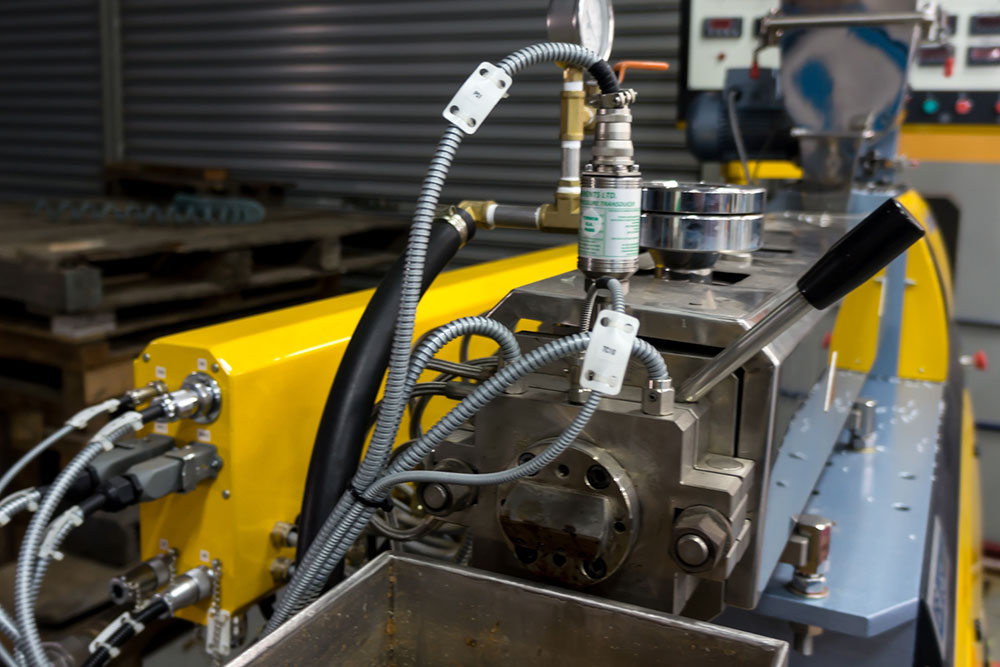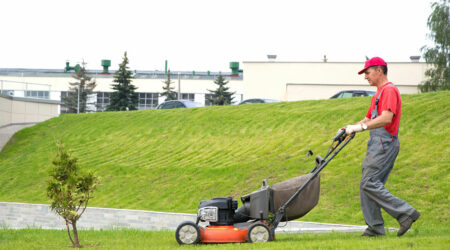
PVC extrusion machines – Types and applications
Industries rely on specialized equipment to produce and manufacture products from polyvinyl chloride, or PVC, a highly versatile thermoplastic polymer . By utilizing extrusion machines, PVC can be melted and made into pipes, sheets, profiles, pellets, foams, and films. This manufacturing technique is particularly popular in industry sectors that deal with consumer goods, automotive, construction, and plumbing. Given their many benefits, PVC extrusion machines are highly efficient and cost-friendly for such industries.
Single-screw extruders
This type of PVC extruding machine is commonly used in the industry and consists of a single rotating screw placed within a heated barrel. This unique configuration gradually allows the machine to melt the plastic material using both external heaters and friction. Once the PVC is melted , it is passed into the die to achieve the intended shape and design. What sets single-screw PVC extrusion machines apart is their design, which enables easy operation. Companies often choose this type of extruder for its efficiency, versatility, and cost-effectiveness. Moreover, several industries can use these machines for a wide range of PVC products, making them a popular choice. That said, companies tend to use this efficient and easy-to-operate equipment with materials that are easy to process.
Single-screw extruders are primarily used to manufacture PVC pipes and tubes. They have also found applications in the plumbing, irrigation, and electrical industries. Additionally, single-screw PVC extrusion machines can assist in the production of door profiles, window frames, and similar structural components. They can also produce PVC sheets and films.
Twin-screw extruders
Twin-screw PVC extrusion machines come in different types, each with unique features. These types of machines are equipped with two intermeshed screws in the barrel of the equipment, allowing for better mixing and melting of materials. They are further classified based on the direction of rotation of each screw. In the co-rotating twin-screw extruder type, both screws move in the same direction, while in the counter-rotating type, one screw moves clockwise and the other anticlockwise. Companies need to carefully compare the advantages of these two machine types to determine which one would best suit their specific applications.
Companies that want control over the quality and consistency of their products often opt for twin-screw extruders. The machines are more efficient for complex formulations and have a higher output.
Twin-screw PVC extrusion machines are ideally suited for blending PVC with fillers or additives. Companies can also reinforce PVC with custom materials or formulas based on the requirements. These extrusion machines can be utilized by companies that require a higher output than those produced by single-screw extrusion machines, enabling the mass production of PVC pipes, films, and profiles. Moreover, the precise mixing capabilities of these machines can be used to produce products with uniform properties. But it is also important to note that the added benefits come with a higher maintenance cost for twin-screw extruders. In addition, these machines are slightly more complex to use compared to single-screw extrusion machines.
Pelletizing extruders
These types of extruders are used to convert raw PVC into pellets. Pelletizing extruders feature two screws, making them a twin-screw PVC extrusion machine. These machines are used to thoroughly melt and mix materials to produce pellets, which can be further used as feedstock for other extrusion processes. This versatile process is commonly employed in the production of custom PVC compounds, allowing companies to create their own PVC compound formulations by adding different additives or fillers.
Pelletizing extruders are preferred for the large-scale production of high-quality pellets. The precise mixing of the raw materials ensures that the resultant products are uniformly produced without their quality being compromised . Companies that need machines to allow customizations in their products can easily use these PVC extruders. But considering the specialized applications of these machines, they might not be as versatile as the other options. Additionally, pelletizing PVC extruders also requires a higher initial investment than basic PVC extruders.
These machines also play a crucial role in manufacturing industries. They are used to rapidly produce PVC products with minimal downtime . Moreover, the speed and efficiency of these machines make them cost-effective for the industries where they are used. Additionally, PVC, as a raw material, is cheaper than most other compounds. When these two factors are combined, companies benefit from lower production costs and bigger profit margins. The extruders have found applications in pipe, sheets, films, profiles, and foamed product production and manufacturing.
Companies that require high-quality PVC extrusion machines for their manufacturing units must consider various aspects, such as budget, application, materials required, efficiency, and scalability .




